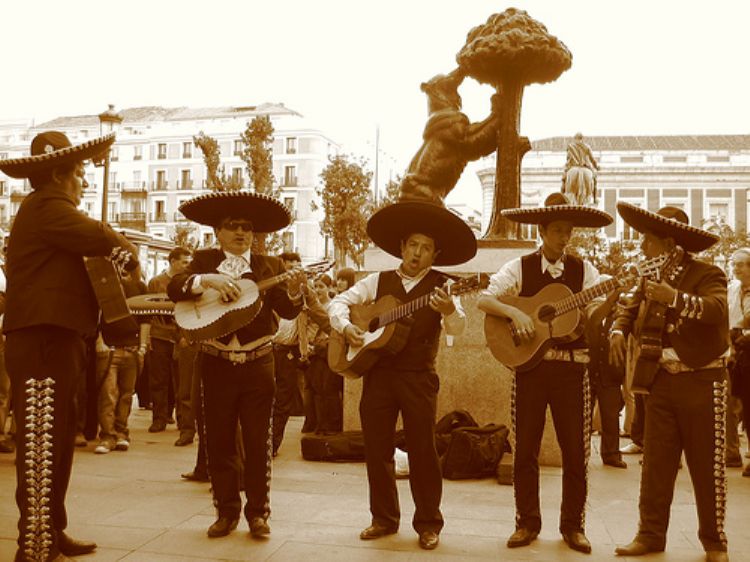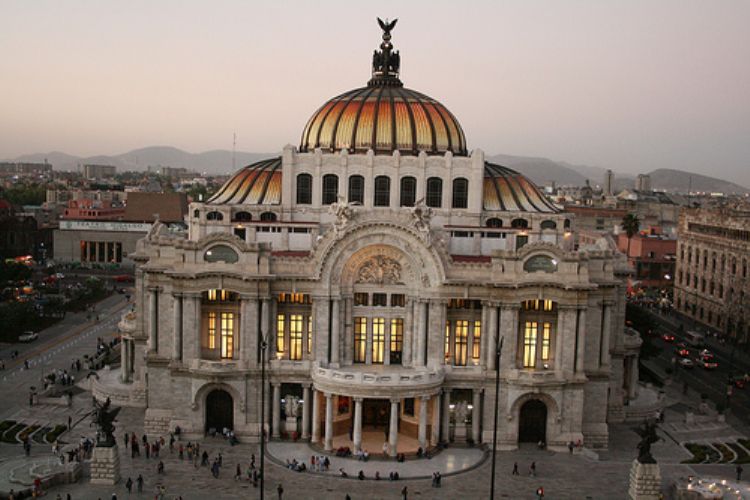
The dictionaries of Academia Mexicana de la Lengua and th...

The majority of the millions of people residing within the Federal District, 8.7 million to be precise, descend from Mexicans of nearby or far-away provinces, from Spanish colonizers or from immigrants from various nationalities such as French, Italian, Chinese, North American or even Lebanese, people getting away from their countries for various reasons and which chose the great Mexican capital as their home, transforming it in the process into a world class cosmopolitan urban center. It is no mystery then that the local contemporary culture, nationally known as the "Chilanga", is the result of a great cultural fusion where everyone has a place. Religious expressions of every kind, for example, all have a proper spaces and premises, be it a Jewish synagogue or an Islamic masijd . Regarding Catholicism, the religious tradition that molded the Mexican culture, the worshiping of the Virgin of Guadalupe represents one of the strongest features in the identity of those living in the capital. The Guadalupana as it is locally referred to, is considered the mother creator of all Mexicans before God father, and at the same time is humble and dark-skinned, just as their indigenous ancestors. So it is no wonder that visitors find profuse expressions of such religious devotion all over the city, such as images of the Virgin on taxis, cars and t-shirts; large street sales of religious items; and large crowds attending the Basilica de Guadalupe at all times. With a density reaching 5,800 inhabitants per sq. kilometer, the Mexican capital takes the undisputed first place nationally, which implies a constant struggle for its citizens in every way, shape and form, as overpopulation in the city has shaped the Chilango character, and anyone who gets distracted if only for an instant will see how those who stay awake and vigilant take the jobs, the opportunities, the little space available. This is why residents in the capital actually show a different attitude towards work and life in general, as compared to that found in the people living throughout the provinces, who have not such a need to be constantly on the watch for mere survival. In terms of the gastronomy that Mexico City has to offer, it goes without saying visitors will have no idea where to begin, given the immense variety of cuisines and styles. However, it is highly recommended to begin with the basic city traditions, consisting of breakfast with some "basket" tacos, prepared with rich home-made stews; lunch with sausage pie or barbecue lamb and sweet bread for dessert; and dinner, with some tacos or cheese tortillas known as Quesadillas, seasoned with pumpkin and corn smut. A feature of the culture in the capital that indeed surprises visitors represents the dynamics and habits found on the road; great avenues and key connections are in fact always overloaded with vehicles, and drivers have developed skills to maneuver in traffic so as to take advantage of every inch available, for they know they may have a two or even three hour drive ahead. This is why visitors are advised to be extremely patient, and in case of driving, a street map will be a must as the city is planned around beltways or rings, so anyone not familiar with the routes may actually end going round in circles over and over again. The schedule for festivities in Mexico City is very similar to that in the rest of the country; Easter is intensively celebrated during March or April, depending on the particular year; national holidays include the Fiestas Patrias on the 15th of September and the "Day of the Dead" on November the 2nd; and the catholic pilgrimage that takes place in the Christmas season at the end of year. A celebration of international repute that stands out represents the ritual of the Passion of Christ by the Iztapa delegation on the eastern side of the capital.